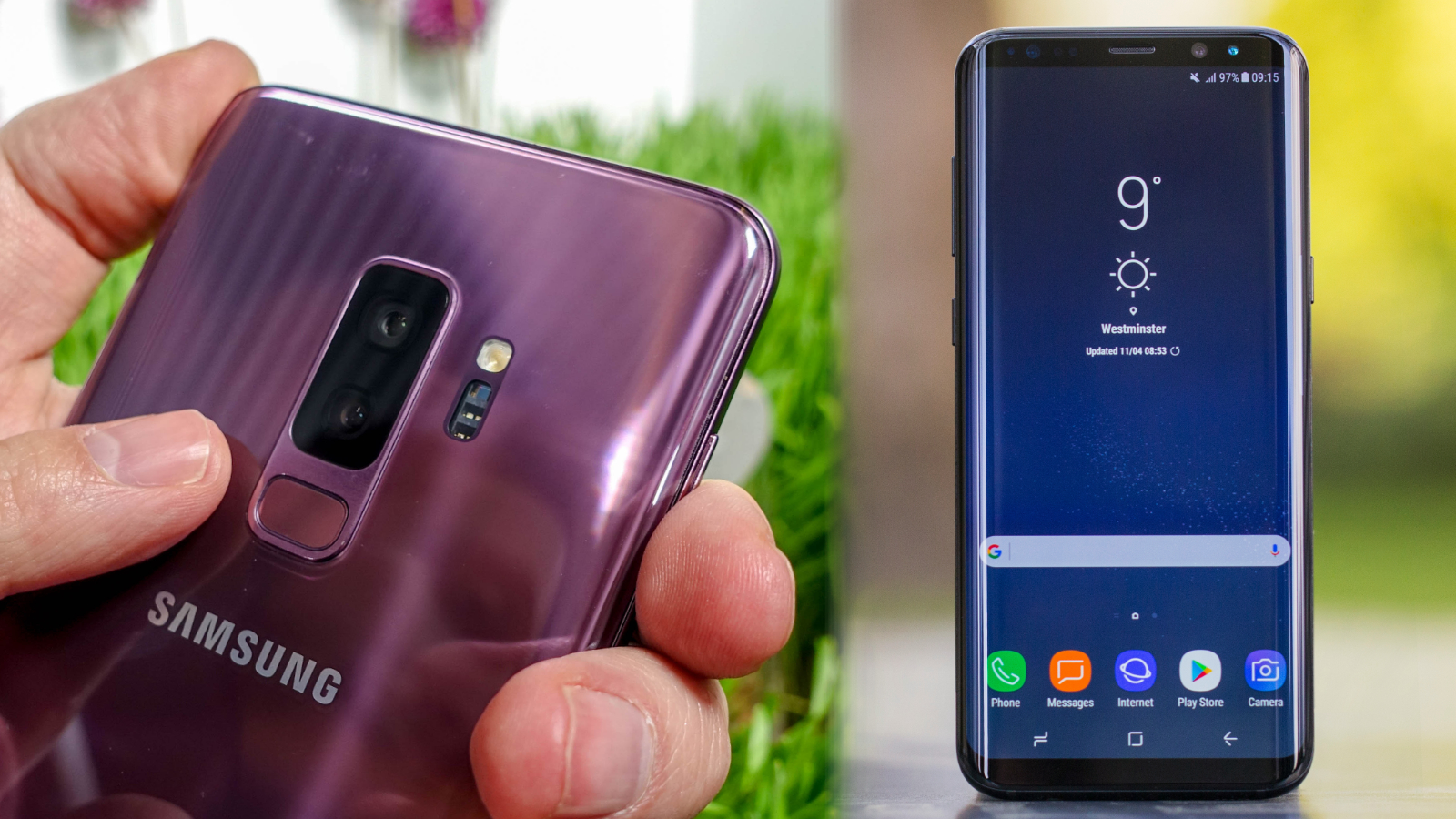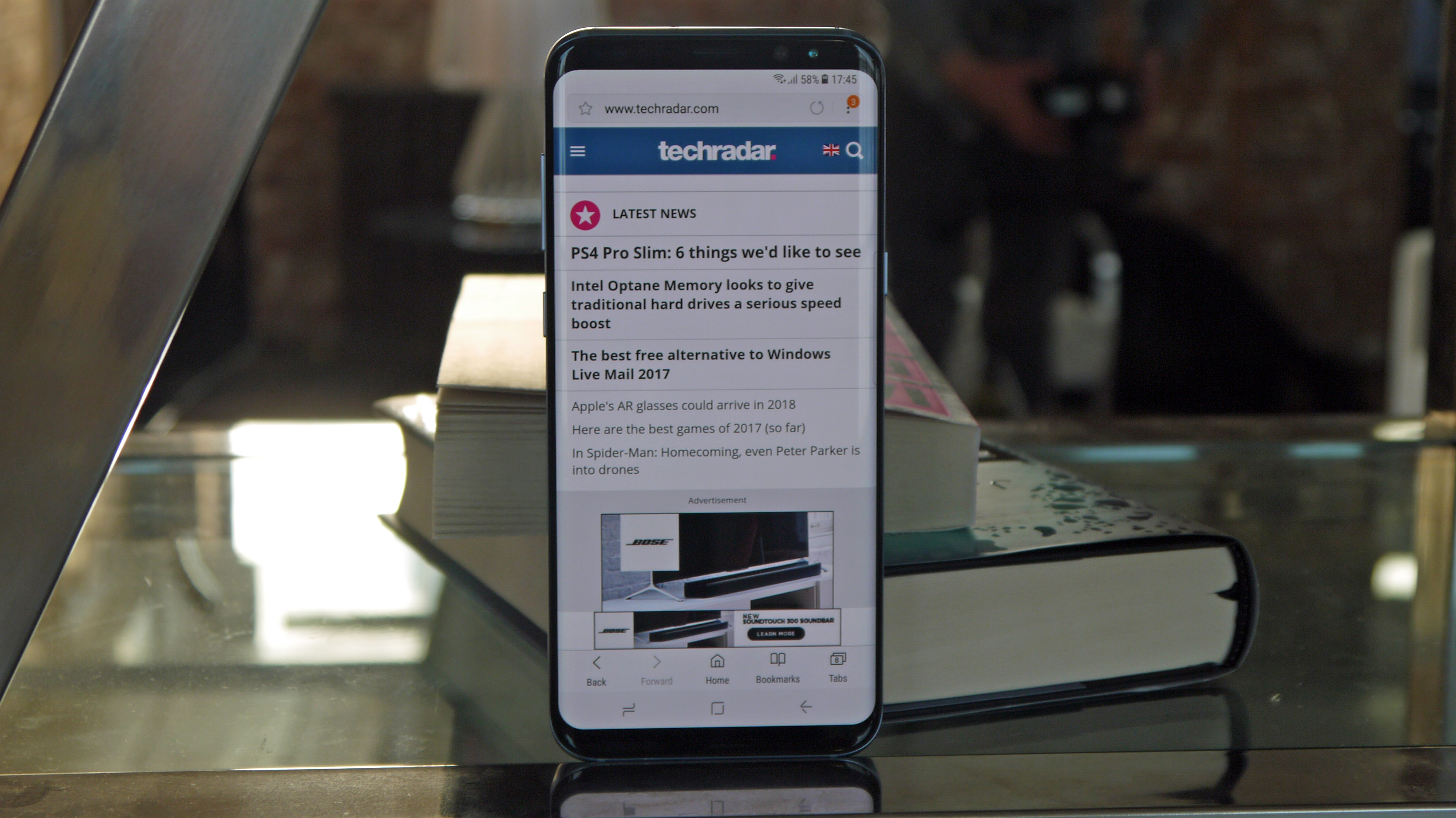Samsung Galaxy S9 Plus vs Samsung Galaxy S8 Plus
Similar screens, very different cameras

Want a big phone but don’t need a stylus? Then there’s a good chance you want one of Samsung’s ‘Plus’ range. And what luck! The company has just announced a new one, sporting even more tech – and an even higher price tag – than its new standard flagship, the Galaxy S9.
So, is the Samsung Galaxy S9 Plus the phone for you, or are you better off sticking with the in many ways similar yet more affordable Samsung Galaxy S8 Plus?
Only you can answer that question, but we can help, as we’ve compared the two phones across every key category, so you can see exactly what’s new and what’s not.
Price comparison
The Samsung Galaxy S9 Plus will be coming for £869 / $839.99 / AU$1,349, which is an odd way around for the pricing across the territories.
The Samsung Galaxy S8 Plus launched for around £100 / $100 cheaper when it was unveiled in the UK and US, but now can be found for £599 in some places. However, the Galaxy S9 Plus doesn't seem to be all that more expensive, given how much technology has been placed into the mix and you can still pick up the S8 Plus in the US for $825.
In Australia, the S8 Plus launched at the same starting price of AU$1,349 as the S9 Plus, although last year's big phone can be found for considerably less at this point, similar to the other territories.
Samsung Galaxy S9 Plus vs Samsung Galaxy S8 Plus design
Watch our hands-on video with the Samsung Galaxy S9 Plus above.
Sign up for breaking news, reviews, opinion, top tech deals, and more.
The differences between these two phones won’t be totally obvious just from looking at them, as they’re superficially quite similar – both have a curved screen, a glass back and a metal frame.
Look closer though and you will see some differences, as among other things the bezels above and below the display are slightly smaller on the Galaxy S9 Plus.
You might think that would mean the S9 Plus was slightly more compact overall, but while it’s not as tall as the S8 Plus it is wider and thicker, coming in at 158.1 x 73.8 x 8.5mm to the S8 Plus’s 159.5 x 73.4 x 8.1mm.
It’s also heavier, with the Galaxy S9 Plus and Galaxy S8 Plus weighing 189g and 173g respectively. Of course, these differences in size and weight are all very small.

Perhaps more noticeable is the extra camera lens on the back of the Galaxy S9 Plus, and the fingerprint scanner that now sits below those lenses, rather than to the right of the lens as it does on the Galaxy S8 Plus.
The available colors are another difference, with the Samsung Galaxy S9 Plus launching in Midnight Black, Coral Blue and Lilac Purple, while the Galaxy S8 Plus is available in Midnight Black, Orchid Grey, Arctic Silver, Coral Blue, Maple Gold and Rose Pink.
One thing that’s not different though is the level of water and dust resistance offered, with both phones being IP68 certified. That means you can submerge them up to 1.5 meters deep for up to 30 minutes. They also both have a headphone port.
Samsung Galaxy S9 Plus vs Samsung Galaxy S8 Plus display

While Samsung’s flagships typically have some of the best smartphone screens, further improvements to the display don’t seem to have been a priority this year, as the Galaxy S9 Plus has a 6.2-inch QHD+ Super AMOLED display with an aspect ratio of 18.5:9, just like the Samsung Galaxy S8 Plus.
That puts both of these among the larger phones you’ll find, and the Galaxy S9 Plus possibly has a slight edge here thanks to smaller bezels and new software features, such as the ability to take more advantage of the super widescreen aspect ratio by viewing the interface in landscape orientation.
Samsung Galaxy S9 Plus vs Samsung Galaxy S8 Plus OS and power
Click above to watch our Samsung Galaxy S8 Plus video review.
In most of the world the Samsung Galaxy S9 Plus has an Exynos 9810 chipset. This is an octa-core one with four cores running at 2.7GHz and four clocked at 1.7GHz. However, if you’re in the US you’ll get a similarly high-end octa-core Snapdragon 845, which can be clocked at up to 2.8GHz. In both cases there’s also 6GB of RAM.
That’s a top-end configuration and it has the S8 Plus beat, as that has either an octa-core Exynos 8895 chipset with four cores running at 2.3GHz and four running at 1.7GHz, or an octa-core Snapdragon 835 chip with four cores clocked at 2.35GHz and four at 1.9GHz.
The Snapdragon/Exynos split is the same – so you’ll get the 835 in the US and the 8895 elsewhere, and while both of those were top-end chips when the S8 Plus launched they’ve now been superseded by the chips in the S9 Plus.

The Samsung Galaxy S8 Plus also has just 4GB of RAM – 2GB less than the Galaxy S9 Plus, but all that said it’s still a speedy performer.
Other improvements for the Galaxy S9 Plus include faster mobile data thanks to support for Gigabit LTE, and the S9 Plus ships with Android Oreo onboard – the Galaxy S8 Plus is due to be updated from Nougat to Oreo soon, but the Galaxy S9 Plus is likely to be supported with updates for longer.
Storage-wise you get 128GB in the Samsung Galaxy S9 Plus, which is double the 64GB found in the Galaxy S8 Plus, but both phones have a microSD card slot.
Samsung Galaxy S9 Plus vs Samsung Galaxy S8 Plus camera and battery

One of the biggest changes to this year’s model comes in the form of the camera, as among other things Samsung has added an extra lens.
The Samsung Galaxy S9 Plus has a dual-lens 12MP camera, with one lens being a wide-angle one that’s able to switch between an f/1.5 aperture, which should be great for low light shots, and an f/2.4 one for when the light is better, and the other lens being a telephoto one with a fixed aperture of f/2.4.
The Samsung Galaxy S8 Plus meanwhile has just a single-lens 12MP camera with an f/1.7 aperture, so it’s far less flexible in terms of the types of shots you can take and the situations it theoretically excels at.
Shots taken with the f/1.5 camera on the Galaxy S9 Plus apparently exhibit 30% less noise than those taken by the S8 Plus, though in our review we still found the S8 Plus to have a great smartphone camera, even in low light, and both phones have optical image stabilization.
Away from the hardware, the S9 Plus’s camera also has some software improvements, such as the ability to shoot slow motion videos at 960fps, which is four times slower than the S8 Plus.
You also have more control over the slow-motion footage you shoot, by for example being able to set a focus point that will automatically trigger the camera to start recording in slow motion once it detects movement, and by being able to add a soundtrack to the footage you shoot or convert it into a GIF.
The camera on the Galaxy S9 Plus also has a new ‘AR emoji’ feature, which lets you turn yourself into an emoji.
And there are new Bixby features that use the camera, such as one which will translate any text that you point your phone at.
One thing that’s not different though is the front-facing camera, as both phones have an 8MP f/1.7 one.
Both phones also have a 3,500mAh battery and support for fast charging via USB-C, as well as wireless charging.
Takeaway

The Samsung Galaxy S9 Plus sounds like it probably has a significantly better camera than the already-great one found in the Galaxy S8 Plus, so this could be a strong flagship choice for photography fans - though you'll have to wait for our review to know for sure.
It also has more power, as you’d expect, and smaller bezels, plus there’s twice as much built-in storage, which could be handy if you like to store a lot of media on your phone.
But in many ways it also sounds very similar to the Galaxy S8 Plus, at least on paper, especially when it comes to the overall design, the screen and the battery.
Aside from the camera Samsung has seemingly focused on polishing rather than completely reworking its flagship range, so if you want something totally new you might have to wait for the Galaxy S10 Plus or the Samsung Galaxy X.
- The Samsung Galaxy Note 9 might have an even bigger screen
James is a freelance phones, tablets and wearables writer and sub-editor at TechRadar. He has a love for everything ‘smart’, from watches to lights, and can often be found arguing with AI assistants or drowning in the latest apps. James also contributes to 3G.co.uk, 4G.co.uk and 5G.co.uk and has written for T3, Digital Camera World, Clarity Media and others, with work on the web, in print and on TV.